The Five Worst Mass Extinctions | ||
Time periods in the history of life on Earth during which exceptionally large numbers of species go extinct are called mass extinctions. These extinctions are quite different from the rate of extinction, which occurs even when the diversity of life is increasing. Many species vanished in five cataclysmic mass extinctions and today, 99.9 percent of all species that have existed on Earth are extinct.
The Ordovician-Silurian extinction occurred about 439 million years ago due to a drop in sea levels as glaciers formed followed by rising sea levels as glaciers melted. During this extinction 25 percent of marine families and 60 percent of marine genera (the classification above species) were lost. The Late Devonian extinction took place somewhere around 364 million years ago. To this day its cause is unknown. However, evidence supporting the Devonian mass extinction suggesting that warm water marine species were the most severely affected in this extinction event, has lead many paleontologists to believe that an episode of global cooling, similar to the event which that may have resulted in the Ordovician-Silurian mass extinction, may have lead to the Devonian extinction. Thus this theory suggests that the extinction of the Devonian was triggered by another glaciation event on Gondwana, which is evidenced by glacial deposits of this age in northern Brazil. Similarly to the late Ordovician crisis, agents such as global cooling and widespread lowering of sea-level may have triggered the late Devonian crisis. Scientists have also suggested that meteorite impacts may have been possible agents for the Devonian mass extinction, but the data in support of a possible extra-terrestrial impact remains inconclusive, and the mechanisms responsible for the Devonian mass extinction are still under debate. What is know, however, is that this mass extinction killed 22 percent of marine families and 57 percent of marine genera.
The Permian-Triassic extinction happened about 251 million years ago and was Earths worst mass extinction. 95 percent of all species, 53 percent of marine families, 84 percent of marine genera, and an estimated 70 percent of land species such as plants, insects and vertebrate animals were killed during this catastrophe. Direct evidence for this period has not been found but many scientists believe a comet or asteroid impact led to this extinction. Others think that volcanic eruption, coating large stretches of land with lava from the Siberian Traps, which are centered around the Siberian City of Tura, and related loss of oxygen in the seas were the cause of this mass extinction. Still other scientists suspect that the impact of the comet or asteroid triggered the volcanism.
The End Triassic extinction, taking place roughly 199 million to 214 million years ago, was most likely caused by massive floods of lava erupting from the central Atlantic magmatic province triggering the breakup of Pangaea and the opening of the Atlantic Ocean. The volcanism may have led to deadly global warming. Rocks from the eruptions now are found in the eastern United States, eastern Brazil, North Africa and Spain. 22 percent of marine families, 52 percent of marine genera, and an unknown percentage of vertebrate deaths were the result. Finally, the Cretaceous-Tertiary extinction occurred about 65 million years ago and is thought to have been aggravated, if not caused, by impacts of several-mile-wide asteroid that created the Chicxulub crater now hidden on the Yucatan Peninsula and beneath the Gulf of Mexico. Yet, some scientists believe that this mass extinction was caused by gradual climate change or flood-like volcanic eruptions of basalt lava from the Deccan Traps in west-central India. During this extinction, 16 percent of marine families, 47 percent of marine genera, and 18 percent of land vertebrate families including the dinosaurs. The Sixth Mass Extinction has begun!
As unbelievable as it may sound, after having read through the five mass extinctions, the sixth mass extinction is in progress, now, with animals going extinct 100 to 1,000 times (possibly even 1,000 to 10,000 times) faster than at the normal background extinction rate, which is about 10 to 25 species per year. Many researchers claim that we are in the middle of a mass extinction event faster than the Cretaceous-Tertiary extinction which wiped out the dinosaurs.
Rather than a meteorite or large volcanic eruption, the alarming decline of biodiversity (diversity of species on earth) leading to the current mass extinction is the results of five major human activities:
The Hawai'I chaff flower, the golden coqui Puerto Rican tree frog, the Martinique Parrot, the Yuman box turtle, the Madagascan Pygmy hippo, and the Japanese sea lion are amongst the list that include the 784 species of plants and animals that have recently vanished from earth because of human activities. All continents are impacted by this ongoing biological catastrophe. The completion of species inventory on earth and saving them from becoming extinct must be a world priority.
Podcast:
Is The Planet Facing A Mass Extinction?
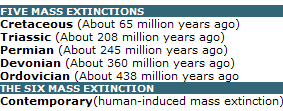 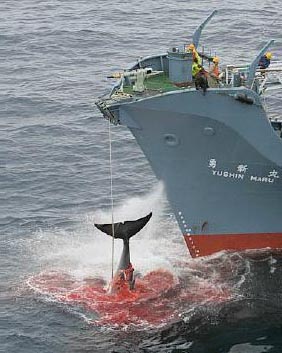 Unlike previous mass extinctions, the current one is mostly due to human actions. 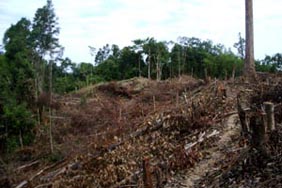 Illegal logging and mining are amongst the biggest dangers to native species.  As endangered species disapear, so do indige- nous people who's lives are closely intertwined with their natural surroundings. 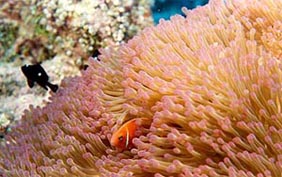 Coral reefs are some of the richest, but also most threatened ecosystems in the world. 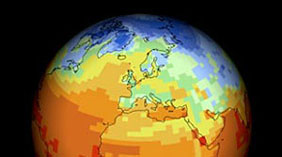 Habitat destruction and global warming are the biggest threat to biodiversity. | ||
मित्रों! आप सबके लिए “आपका ब्लॉग” तैयार है। यहाँ आप अपनी किसी भी विधा की कृति (जैसे- अकविता, संस्मरण, मुक्तक, छन्दबद्धरचना, गीत, ग़ज़ल, शालीनचित्र, यात्रासंस्मरण आदि प्रकाशित कर सकते हैं। बस आपको मुझे मेरे ई-मेल roopchandrashastri@gmail.com पर एक मेल करना होगा। मैं आपको “आपका ब्लॉग” पर लेखक के रूप में आमन्त्रित कर दूँगा। आप मेल स्वीकार कीजिए और अपनी अकविता, संस्मरण, मुक्तक, छन्दबद्धरचना, गीत, ग़ज़ल, शालीनचित्र, यात्रासंस्मरण आदि प्रकाशित कीजिए। |
फ़ॉलोअर
सोमवार, 2 जून 2014
The Sixth Mass Extinction has begun!
सदस्यता लें
टिप्पणियाँ भेजें (Atom)

कोई टिप्पणी नहीं:
एक टिप्पणी भेजें